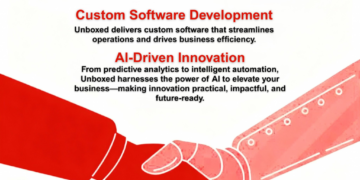Imagine being a CEO at a U.S. insurance company. You wake up to headlines about AI-powered competitors rolling out new products in weeks—while your teams are still battling decades-old code and green-screen terminals. It’s not just a technological hurdle; it’s a strategic one. This reality has made Insurance IT Spending one of the most critical—and scrutinized—topics in the industry today.
The Legacy Tech Trap: Where Most Dollars Still Go
Let’s start with a hard truth: the insurance industry is built on old bones. According to Clearwater Analytics (2024), 74% of insurance companies in the U.S. continue to depend on legacy systems for core functions like underwriting, pricing, and claims. These systems were designed for an era of paper files and physical signatures—not instant quotes and AI-assisted decision-making.
The problem? Maintaining these systems drains financial and human capital. Roughly 70% to 80% of Insurance IT Spending is still tied up in maintaining outdated technology. That means only a fraction is left to invest in innovation, automation, and customer experience enhancements.
This trend is reflected in Deloitte’s June 2024 survey of 200 U.S. insurance executives. The majority said their top priorities were launching new products faster and maintaining technological relevance. Yet, most admitted that legacy tech remains the single biggest barrier to achieving those goals.
In short: insurers know where they need to go, but their IT budgets are still stuck in the past.
A New Phase of Insurance IT Spending: Shifting from Maintenance to Modernization
The good news is that Insurance IT Spending is finally starting to evolve. 2025 is shaping up to be a turning point, with U.S. insurers expected to increase their technology investments by nearly 9% year-over-year, according to McKinsey’s latest Digital Insurance Outlook. The focus is no longer just on keeping the lights on—it’s about driving measurable business transformation.
Three major shifts are redefining how insurers allocate their IT budgets:
- Cloud-First Modernization – The move toward cloud-based platforms is now mainstream. Cloud systems enable modular upgrades, faster innovation cycles, and real-time data sharing. Accenture reports that insurers using cloud-native systems reduce new product launch times by up to 40%.
- AI and Automation Integration – AI is no longer optional. It’s driving efficiency in underwriting, claims processing, and fraud detection. Insurers investing in AI tools within their Insurance IT Spending are seeing an average ROI of 25% within 18 months, according to PwC’s 2025 Insurance Insights report.
- Cybersecurity and Compliance Investment – With the rise of data privacy regulations, security spending has become a boardroom issue. Modern IT strategies now allocate up to 20% of total Insurance IT Spending to cybersecurity—a sharp increase from 10% just three years ago.
The Customer Mandate: Digital Expectations Are Non-Negotiable
The American insurance customer has gone digital—and fast. Whether they’re applying for home insurance or tracking a claim, they expect the same seamless experience they get from Amazon or Apple. Real-time communication, personalization, and instant responses are no longer luxuries—they’re the baseline.
AI and data analytics can meet these demands, but only if insurers have the right infrastructure. Legacy systems that can’t integrate with modern APIs or third-party data providers will continue to limit speed, agility, and customer satisfaction.
Forward-thinking insurers are therefore directing Insurance IT Spending toward digital front-end experiences—chatbots, predictive analytics, and self-service portals—that strengthen customer loyalty and brand differentiation.
Looking Ahead: From IT Cost to Competitive Edge
The future of Insurance IT Spending lies in transforming technology from a back-office function into a strategic differentiator. By 2026, Gartner forecasts that 60% of insurance CIOs will reallocate more than half their IT budgets to modernization and digital transformation initiatives.
In a market defined by speed and personalization, modernization isn’t just an IT issue—it’s a survival strategy. Insurers that keep pouring money into legacy maintenance will find themselves outpaced by agile competitors that treat IT as an innovation driver.
For U.S. insurers, the challenge is clear: shift spending from maintenance to momentum. Insurance IT Spending isn’t just about keeping systems alive—it’s about building the digital backbone for the future of insurance.
















